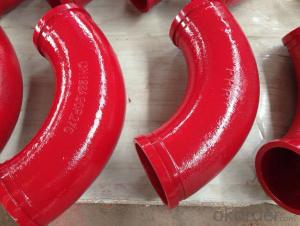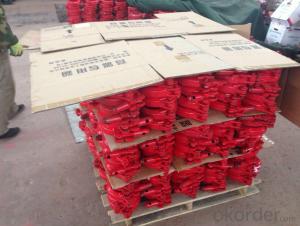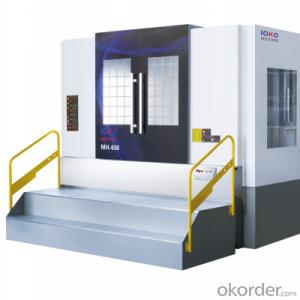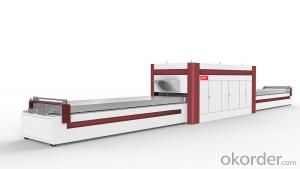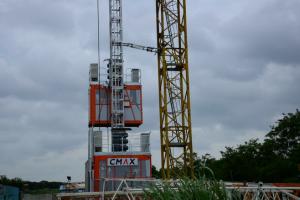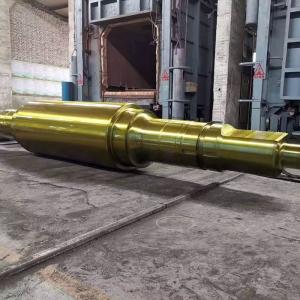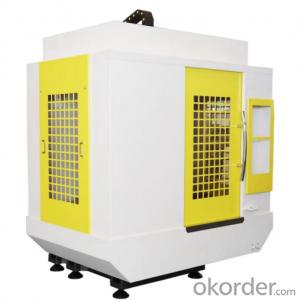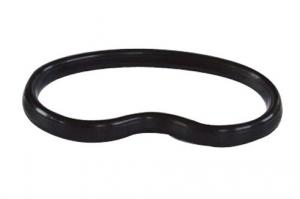CONCRETE DELIVERY ELBOW TYPE 90DEG R175 DN100
- Loading Port:
- Tianjin
- Payment Terms:
- TT OR LC
- Min Order Qty:
- 100 pc
- Supply Capability:
- 10000 pc/month
OKorder Service Pledge
OKorder Financial Service
You Might Also Like
concrete pump elbow table
Wear-resistant Single or Double Concrete Pump Elbow | |||||||
Type | Singe Elbow | Double Elbow | |||||
Model | DN125 | DN150 | DN175 | DN125 | |||
Material | Casting Steel ,ST52 | Inside | 40Cr | Outside | |||
Size | R275*90° | R275*90°+110 | 36° | F2000 | R275*90° | R275*90°+110 | |
R275*45° | R275*90°+211 | R400*30° | A3000 | R275*45° | R275*90°+211 | ||
R275*25° | R275*90°+411 | R400*45° | 471B | R275*25° | R275*90°+411 | ||
R275*20° | R275*90°+424 | R400*30° | 571B | R275*20° | R275*90°+424 | ||
R275*15° | R275*45°+170 | R488*90° | A1000 | R275*15° | R275*45°+170 | ||
R180*90° | R275*45°+310 | R500*90 | C1000 | R180*90° | R275*45°+310 | ||
R232*60° | R275*45°+310 | R280*90° | B2000 | R232*60° | R275*45°+310 | ||
R240*36° | 20°Lengthen | R240*36° | 20°Lengthen | ||||
R240*30° | 25°+740 | R240*30° | 25°+740 | ||||
R240*15° | 40°Zoomlion | R240*15° | 40°Zoomlion | ||||
R385*29° | R385*29° | ||||||
R315*33° | R315*33° | ||||||
Technic | Forged | ||||||
Average life | 25,000cubic | 50,000cubic | |||||
Appliciation | Used in concrete transport in construction work | ||||||
1.product profile:The double layer concrete pump elbow is developed by ourselves through new
technology and process.
2.characteristic:the inner layer of this concrete pump elbow undergoes heat treatment,and then the rigitiry can reach 62-65HRC.
3.characteristic:the outer layer of the concrete pump elbow possess good toughness properties
to protect the inner layer,so the security of the elbow is improved.
4.life:the experiment done abroad shows that the life of our concrete pump elbow can reach 35000-50000cbm,got the customers' praise
5.Beside the double layer concrete pump elbow,we produce all kinds of concrete pump parts,
straight pipe hose flange coupling and so on.
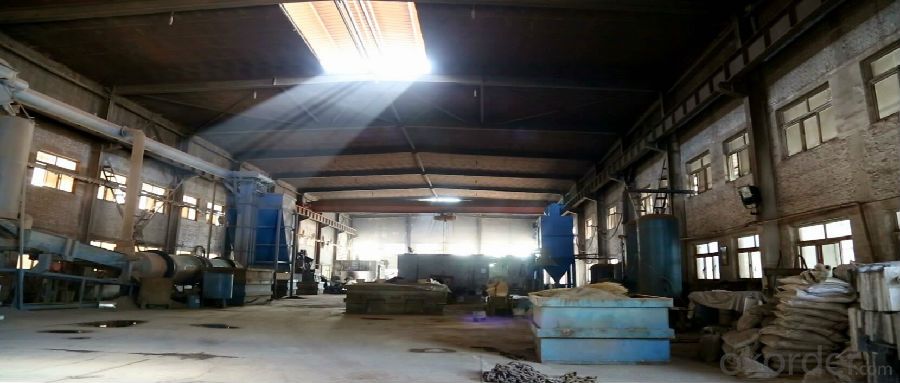
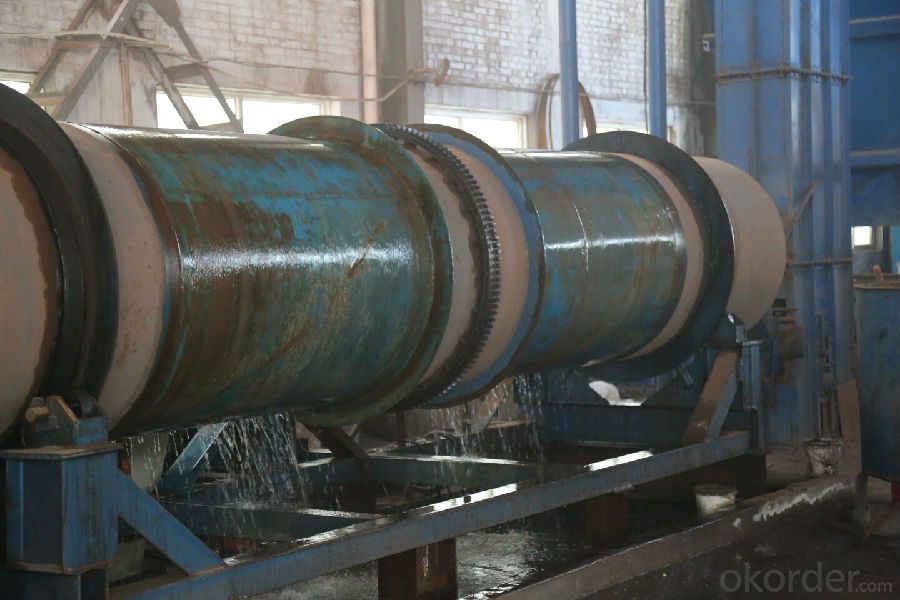

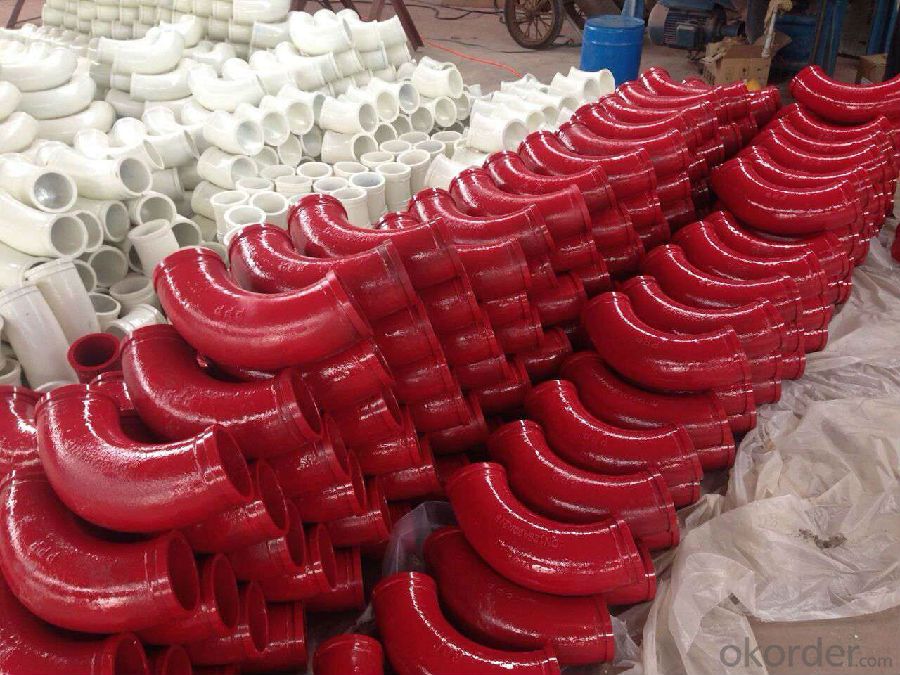
- Q:How do I properly maintain and replace hydraulic filters in concrete pump spare parts?
- To ensure your equipment's longevity and efficiency, it is crucial to properly maintain and replace hydraulic filters in concrete pump spare parts. Here are some guidelines to follow: 1. Familiarize yourself with the manufacturer's recommendations: Understand the maintenance and replacement guidelines provided by the manufacturer. These instructions may vary based on the specific pump model and filter type. 2. Regularly inspect the filters: Conduct regular inspections to identify any signs of damage, clogging, or excessive wear in the hydraulic filters. Look out for dirt, debris, or other contaminants that may hinder their performance. Address any issues promptly. 3. Establish a maintenance schedule: Implement a regular maintenance schedule for the hydraulic filters. This should include regular inspections, cleaning, and replacement intervals. Adhering to a schedule will prevent unexpected breakdowns and keep the concrete pump running smoothly. 4. Clean the filters: If the hydraulic filters can be cleaned and reused, ensure to follow the proper cleaning procedure. This typically involves removing the filter, washing it with a suitable cleaning solution, and allowing it to dry thoroughly before reinstalling. Take care not to damage the filter during the cleaning process. 5. Replace as necessary: Over time, hydraulic filters become less effective at filtering out contaminants. It is important to replace them according to the manufacturer's recommended intervals or sooner if they appear excessively dirty or damaged. Always use genuine spare parts to ensure compatibility and optimal performance. 6. Install correctly: When replacing hydraulic filters, ensure they are installed correctly and securely. Pay attention to any seals or gaskets that may need replacement as well. Improper installation can lead to leaks or reduced filtration efficiency. 7. Monitor performance: After replacing the hydraulic filters, closely monitor the pump's performance. Watch for changes in pressure, flow rate, or unusual noises. If any abnormalities are observed, it may indicate a problem with the filter or other components, requiring further investigation. By following these steps, you can effectively maintain and replace hydraulic filters in your concrete pump spare parts, ensuring optimal performance and extending the equipment's lifespan.
- Q:What are the advantages of using genuine spare parts for my concrete pump?
- There are numerous benefits to utilizing authentic spare parts for your concrete pump. Firstly, these genuine components are specifically designed and produced by the original equipment manufacturer (OEM) for your concrete pump. This guarantees a perfect fit and optimal functioning with your particular model. By using genuine parts, you can avoid compatibility issues or malfunctions that may arise from using aftermarket or counterfeit parts. Furthermore, authentic spare parts are crafted from high-quality materials and undergo rigorous testing to meet stringent quality standards. This ensures their durability, reliability, and performance, resulting in a longer service life and reduced downtime for your concrete pump. Genuine parts are engineered to withstand the demanding conditions and heavy loads commonly encountered by concrete pumps. Moreover, the use of authentic spare parts helps preserve the warranty and integrity of your concrete pump. Many manufacturers offer warranties that cover the utilization of genuine parts. By utilizing genuine parts, you can take advantage of the warranty benefits and avoid any potential problems that may arise from using non-genuine parts, which could invalidate the warranty. In addition, authentic spare parts often come with technical support and expertise from the manufacturer. OEMs possess extensive knowledge and experience with their equipment, and their technical support team can provide guidance, advice, and troubleshooting assistance in the event of any issues. This can be highly advantageous in minimizing downtime and maximizing the efficiency of your concrete pump. Lastly, the use of authentic spare parts ensures the safety of your equipment and operators. Genuine parts are manufactured to meet strict safety regulations and standards, reducing the risk of accidents or failures that can result from using substandard or counterfeit parts. The safety and well-being of your team should always be a top priority, and the use of genuine parts helps guarantee their protection. In conclusion, the utilization of authentic spare parts for your concrete pump offers a range of advantages, including compatibility, quality, durability, warranty coverage, technical support, and safety. Investing in genuine parts not only enhances the performance and longevity of your equipment but also provides peace of mind for both you and your team.
- Q:What are the common issues that require replacement of concrete pump spare parts?
- There are several common issues that can arise in concrete pumps, leading to the need for replacement of spare parts. One common issue is wear and tear on the pump components. Over time, the constant movement of concrete through the pump can cause parts such as the piston, wear plate, and seals to deteriorate and require replacement. Another issue that can arise is blockages or clogs in the pump line. This can occur due to the buildup of hardened concrete or other debris, which can obstruct the flow of concrete. In such cases, it may be necessary to replace parts such as the delivery pipe or hose, or even the entire pump line, to ensure proper functioning. Leaks are another common problem that can occur in concrete pumps. These leaks can be caused by damaged or worn out seals, gaskets, or O-rings. If left unaddressed, leaks can lead to reduced pump performance and even potential safety hazards. Replacing the affected parts can help prevent further damage and ensure the pump operates efficiently. Additionally, pump malfunctions can occur due to electrical or mechanical issues. Faulty electrical components, such as switches or sensors, may need to be replaced to restore proper functionality. Mechanical problems, such as a worn-out gearbox or a malfunctioning hydraulic system, may also require replacement of specific pump parts. Overall, the common issues that require replacement of concrete pump spare parts include wear and tear, blockages, leaks, electrical malfunctions, and mechanical failures. Regular maintenance and inspection of the pump can help identify these issues early on, allowing for timely replacement of the necessary spare parts to keep the pump running smoothly.
- Q:How can a malfunctioning control panel affect the pump's operation?
- The operation of a pump can be negatively affected by a control panel that is not functioning properly. Firstly, the control panel is responsible for monitoring and controlling various functions of the pump, including starting, stopping, and regulating the flow of fluids. If the control panel malfunctions, it may not send accurate signals to the pump, resulting in erratic or incorrect operation. Furthermore, a malfunctioning control panel can cause a breakdown in communication between the pump and other components or systems. For example, if the control panel fails to transmit important information to the pump's sensors or other control devices, the pump may not be able to respond appropriately to changes in pressure, temperature, or flow rate. This can lead to inefficient performance, potential damage to the pump, or even complete failure. Moreover, the safety of the pump's operation can be compromised by a malfunctioning control panel. Control panels often include safety features such as emergency shutdowns or alarms to prevent hazardous situations. If these safety mechanisms are compromised due to a malfunction, it can increase the risk of accidents, equipment damage, or harm to personnel. In conclusion, a malfunctioning control panel can disrupt the proper functioning of a pump by causing operational inconsistencies, loss of communication with other components, decreased efficiency, increased risk of accidents, and potential damage to the pump itself. Therefore, it is essential to regularly inspect and maintain control panels to ensure they function properly and minimize the chances of any negative impact on the pump's operation.
- Q:Can concrete pump spare parts be tested for performance and quality before installation?
- Yes, concrete pump spare parts can be tested for performance and quality before installation. This is typically done to ensure that the parts meet the required specifications and standards, reducing the risk of any potential issues or failures during operation. Testing can involve various methods such as performance testing, stress testing, durability testing, and quality control checks to ensure optimal performance and reliability of the spare parts.
- Q:What is the role of a concrete pump cylinder in a pumping system?
- The primary function of a concrete pump cylinder in a pumping system is to create the essential pressure and force needed for the transportation of concrete. This is achieved by the cylinder's ability to generate a reciprocating motion that propels the concrete through the pipeline. Typically, the concrete pump cylinder is connected to a piston which moves back and forth within the cylinder to facilitate the pumping action. As the piston moves towards the outlet end of the cylinder, it creates a vacuum that draws the concrete from the hopper. Conversely, when the piston moves in the opposite direction, it compresses the concrete, pushing it through the outlet valve, into the pipeline, and ultimately to the desired location. The size and design of the concrete pump cylinder are determined by various factors, including the desired pumping capacity, the distance over which the concrete needs to be transported, and the viscosity of the concrete mix. It is crucial for the cylinder to possess strength and durability to withstand the high pressures and repetitive movements involved in the pumping process. In conclusion, the concrete pump cylinder assumes the vital role of generating the necessary pressure and force for the efficient and effective transportation of concrete. It serves as the foundation of the pumping system, enabling a seamless and uninterrupted flow of concrete from the hopper to the desired destination.
- Q:Do concrete pump spare parts come with a warranty?
- Certainly, a warranty is provided for concrete pump spare parts. The duration of the warranty may differ depending on the manufacturer and the specific part being acquired. Typically, well-established manufacturers and suppliers offer warranties on their spare parts to instill confidence in customers regarding the product's quality and dependability. It is crucial to thoroughly examine the warranty's terms and conditions to comprehend the coverage and duration. Should any flaws or complications arise within the warranty period, customers can usually obtain a replacement or have the part repaired without incurring any additional expenses.
- Q:How do I properly maintain and replace rubber pistons in concrete pump spare parts?
- To guarantee efficient pump operation and extend equipment lifespan, it is imperative to maintain and replace rubber pistons in concrete pump spare parts. Below are guidelines for proper maintenance and replacement: 1. Regularly Inspect: Regularly examine the rubber pistons to detect any wear or damage. Look for visible signs of deterioration such as cracks, tears, or other forms of degradation. 2. Thorough Cleaning: Prior to replacing the rubber pistons, thoroughly cleanse the surrounding area. Remove any dirt, debris, or concrete residue that may be present. This will prevent contamination and ensure a proper fit for the new pistons. 3. Adequate Lubrication: Apply a suitable lubricant to the rubber pistons to guarantee smooth operation and reduce friction. This will prolong the pistons' lifespan and prevent premature wear. 4. Proper Installation: When replacing the rubber pistons, ensure correct installation in accordance with the manufacturer's instructions. Utilize appropriate tools and techniques to avoid damaging the pistons or other pump components. 5. High-Quality Replacement Parts: Always opt for reputable suppliers and utilize high-quality replacement rubber pistons. Inferior quality pistons may not perform optimally and could result in frequent replacements or pump damage. 6. Regular Maintenance: Establish a regular maintenance schedule for your concrete pump, including the rubber pistons. This may involve cleaning, lubrication, and inspection of the pistons to identify potential wear or damage before they become major issues. 7. Training and Expertise: Ensure that the individual responsible for maintaining and replacing the rubber pistons possesses the necessary training and expertise. This will ensure proper execution of the task and minimize the risk of pump damage or personnel injury. By adhering to these guidelines, you can effectively maintain and replace rubber pistons in concrete pump spare parts, thereby ensuring optimal equipment performance and longevity.
- Q:What kind of concrete pump truck?
- There is also called ground pump, also called electric pump. Power is powered by electricity. There are tyres that can be towed to the workplace by tractors. The cost of operation is relatively low
- Q:Are there any specific guidelines for the disposal of hydraulic fluids used in concrete pump spare parts?
- Yes, there are specific guidelines for the disposal of hydraulic fluids used in concrete pump spare parts. Hydraulic fluids contain various chemicals and contaminants that can be harmful to the environment if not disposed of properly. Here are some general guidelines to follow: 1. Check local regulations: Different regions may have specific laws and regulations regarding the disposal of hydraulic fluids. It is important to familiarize yourself with these regulations to ensure compliance. 2. Contain the fluid: Properly contain the hydraulic fluid to prevent leaks or spills during transportation. Use appropriate containers that are designed to handle hazardous materials. 3. Do not mix with other fluids: Do not mix hydraulic fluids with other substances, as this can complicate the disposal process and increase the environmental impact. 4. Find a licensed disposal facility: Locate a licensed facility that handles the disposal of hazardous waste. These facilities have the necessary equipment and expertise to handle hydraulic fluids safely. 5. Follow their instructions: When delivering the hydraulic fluid to the disposal facility, follow their specific instructions for drop-off. They may require certain labeling or documentation to ensure proper handling. 6. Consider recycling options: Depending on the type of hydraulic fluid used, recycling may be an option. Some facilities specialize in recycling hydraulic fluids, which can be a more environmentally friendly solution. 7. Educate your staff: Ensure that all personnel working with hydraulic fluids are aware of the proper disposal procedures and understand the importance of following them. By adhering to these guidelines, you can ensure the safe and responsible disposal of hydraulic fluids used in concrete pump spare parts, minimizing harm to the environment and complying with regulations.
1. Manufacturer Overview |
|
|---|---|
| Location | |
| Year Established | |
| Annual Output Value | |
| Main Markets | |
| Company Certifications | |
2. Manufacturer Certificates |
|
|---|---|
| a) Certification Name | |
| Range | |
| Reference | |
| Validity Period | |
3. Manufacturer Capability |
|
|---|---|
| a)Trade Capacity | |
| Nearest Port | |
| Export Percentage | |
| No.of Employees in Trade Department | |
| Language Spoken: | |
| b)Factory Information | |
| Factory Size: | |
| No. of Production Lines | |
| Contract Manufacturing | |
| Product Price Range | |
Send your message to us
CONCRETE DELIVERY ELBOW TYPE 90DEG R175 DN100
- Loading Port:
- Tianjin
- Payment Terms:
- TT OR LC
- Min Order Qty:
- 100 pc
- Supply Capability:
- 10000 pc/month
OKorder Service Pledge
OKorder Financial Service
Similar products
New products
Hot products
Related keywords
